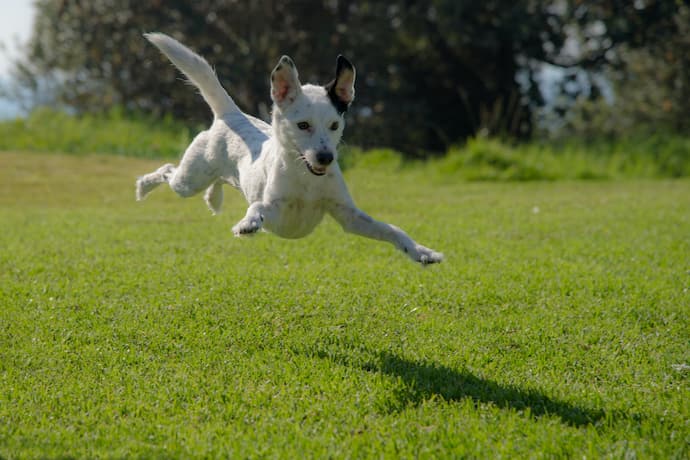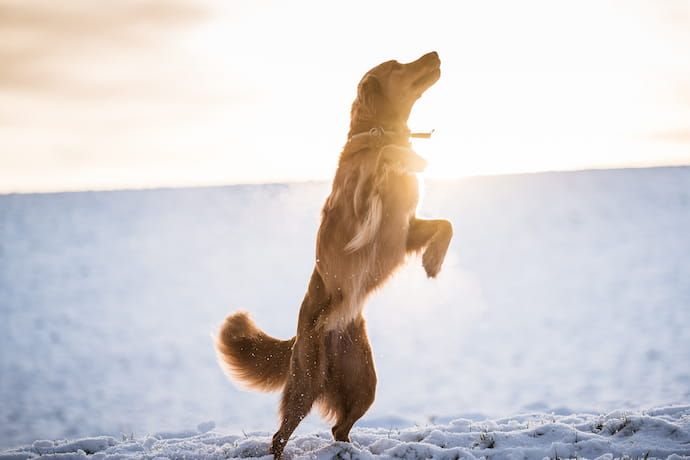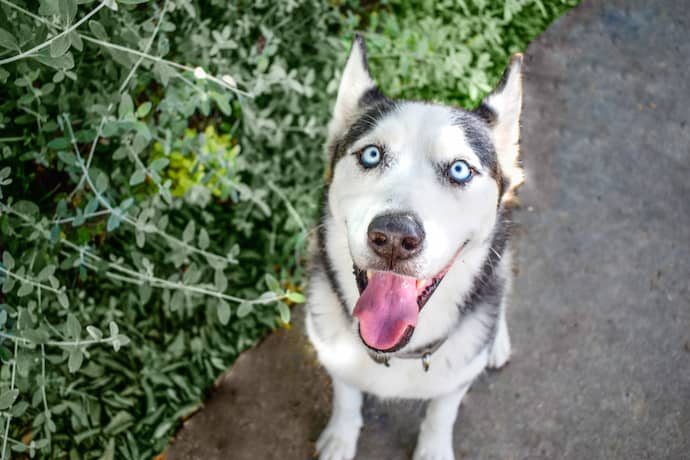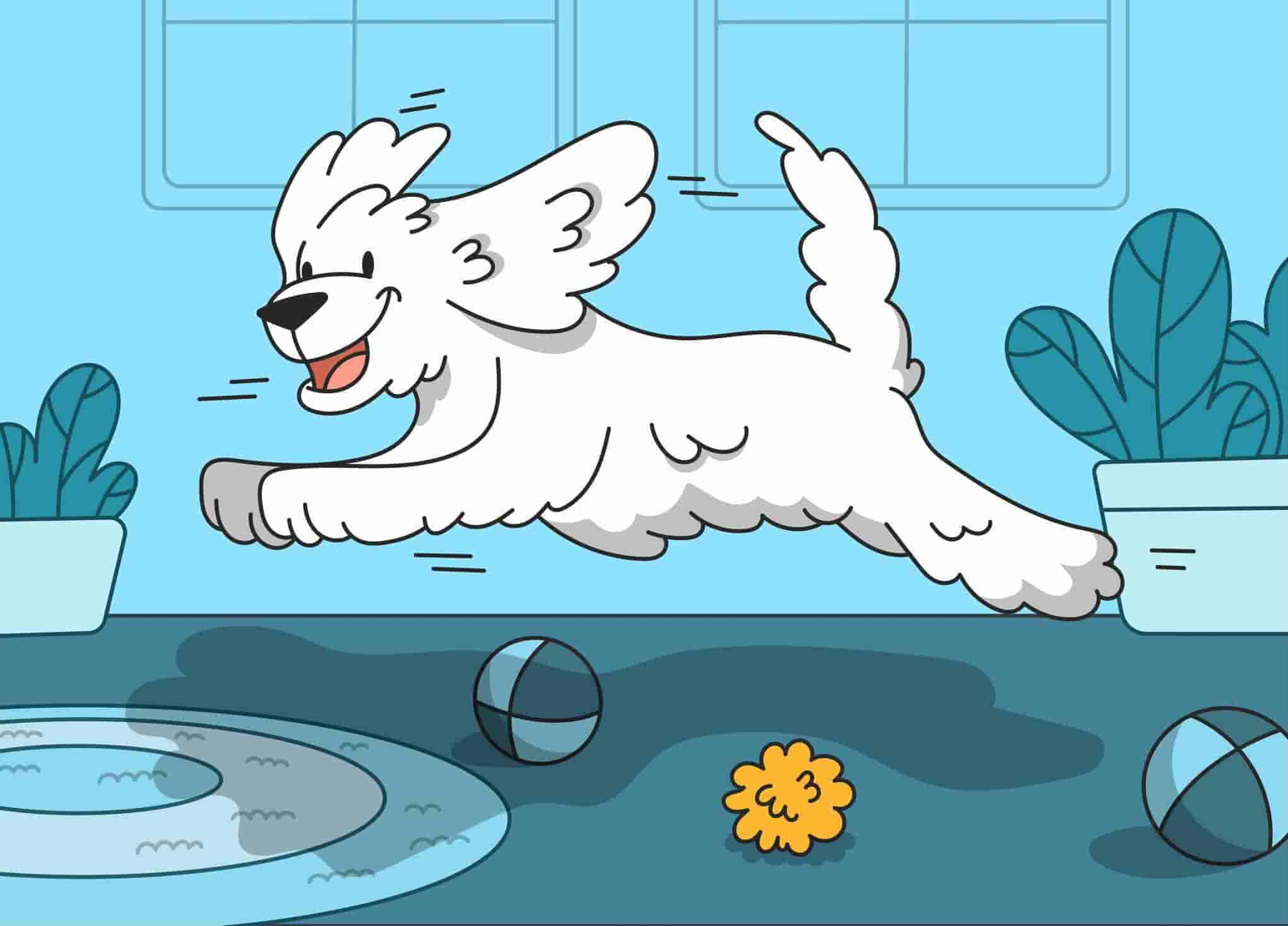If you're a dog owner, you're probably familiar with the scene of your dog greeting you with much enthusiasm when you arrive home. Oh, the joys of having a canine companion!
Among the common ways that dogs show their excitement and seek attention when we arrive is jumping. However, an overly-excited jumpy dog may cause a ruckus and may possibly injure people, especially when young children or older persons are involved. But there is no need to fret! What's great is that this behavior can be addressed healthily through proper training.

Reasons why dogs jump
Dog jumping may be caused by several reasons. Among such include: your dog's desire to greet you, show dominance, seek your attention, steal some food (also known as counter-surfing), or a combination of these. Most often than not, they do it because they want you to notice them. Dogs simply want to greet you with their noses on the same level as yours just like they do with other pups.
However, if you easily react, either positively or negatively, whenever they jump, you may not realize it, but you are actually rewarding this behavior, and thus inadvertently encouraging them to continue. Admittedly, it might be hard for us to resist when puppies (and in some cases, adult dogs too) jump at us.
In effect, giving in may encourage the behavior until they grow older, even if we don't want them to because, for one thing, you might get injured when your grown-up dog jumps on you since they are now bigger, heavier, and stronger (unless your dog is a small breed).
The fact is, dogs have a tendency to repeat behavior when they can gain rewards by doing it. However, any kind of attention from you may seem rewarding for your dog, even when you get mad and shout at them for jumping on you. Instead of giving them attention and thus encourage them when they jump, it would be wise to reward them when they keep their paws on the ground.

How to stop a dog from jumping
When we talk of how to stop your dog from jumping on people, it is necessary to manage the situation and train your dog while teaching them alternative ways to greet people. It involves eliminating the reward that your dog associates with their jumping behavior. At the same time, you also need to reward them when they follow your commands such as "sit" instead of jumping.
Being able to successfully know how to get a dog to stop jumping may take some time, especially when they have been used to doing it ever since they were puppies. However, by being patient with your pup, along with your perseverance in training them, you will be able to have a happy yet obedient dog.
Hold back from giving them attention
This is the first essential step in training a dog not to jump. One way you can do this is by turning your back when your dog starts to jump. Don't say anything while crossing your arms. If your dog paces and jumps once again, turn around without reacting or making a sound as you wait for your dog to stop this behavior.
An alternative way is to retreat. For example, when you enter your home and your dog starts jumping, step back outside without making a sound as well. Take a moment before entering the room again. Repeat this process until your dog stops jumping.
Reward them when they behave
Having treats with you while you train your dog would really help, and it also applies when you want to learn how to train a dog not to jump on people. Before giving your pup a chance to jump, toss them a treat or two. Afterwhich, praise them, but do not go overboard. Giving them too much attention during this time might excite them once again and may lead to jumping. When all their four feet are on the floor, give them treats to show your dog that this is the appropriate behavior.
Practice is key
It would help to arrange situations where you practice with your dog. If, for example, your dog jumps whenever you arrive home from work, you can allot some time practicing the act of leaving and arriving home. Don't make a fuss not to escalate their excitement because fussing over them often leads to the unwanted behavior. If your dog still jumps, step back outside and take a moment before coming back in. When you see that all four feet are on the ground, give them a treat or a reward.
Use the command "Sit" when greeting them
Enter the room where your dog is, and give them the “sit” command. If your dog doesn't know the command yet, it is best to teach it to them as it will help address other unwanted behavior as well. Upon seeing your dog sit, give them a treat as a reward. Repeat this in your training sessions until your dog learns to sit instead of jumping when you enter the room.

Involve family and friends
So you've trained your dog not to jump when you arrive, only to find them jumping when others are around. It may be that your family and friends give your dog so much attention during greetings that it reenforces this behavior. Involving your family and friends in the training process will teach your pooch to keep their feet on the ground regardless of who enters the room. Once you already know why do dogs jump on you, explain these reasons to your friends and family members. If the issue persists, it's best to make use of the "sit" command or have a chat with an animal behaviorist.
How to keep a dog from jumping a fence
While it's doable to teach your pup not to get overly excited about your late-home arrivals, accompanied by jumps and woofs, what to do with a fence? If you have a backyard and your pup is a larger breed, they might jump over the gate or fence despite being taught not to do so. One of the best ways to prevent your dog from jumping the fence is to remember your pup's natural instincts.
The grass is greener on the other side for some four-legged friends, while others see their doggo buddies or other appealing objects. All these events cause much curiosity, eventually forcing your dog to prepare for a jump. Regardless of what motivates your pup to jump over, the best you can do is remove all the aids that assist them. You can extend a fence and make sure all the latches are secure. Since some dogs escape their backyards when you don't see them, ensure that your Fido doesn't jump a fence that easily.
What shouldn't be done
Apart from the recommendations mentioned above, there are said to be training methods that involve punishment. However, such practices are problematic and could hurt your dog in many ways. For the most part, you should focus on positive reinforcement instead of hitting or severely punishing your dog.
Punishment methods, also known as aversive obedient training, cause pain to your pup. You generally want to avoid that and discourage unwanted behavior properly, involving positive obedience training. Regardless of what particular recommendation you follow, do note that hurting your dog is a big no-no. Instead, take your time to introduce positive reinforcement approaches to prevent undesirable behaviors, including jumping on people.
Conclusion
With patience and effort, you can train your dog not to jump and teach them alternative ways to greet people appropriately. Doing so effectively helps to be consistent with managing different situations and training your dog to understand how you want them to behave without confusing or frustrating them. Changes don't arrive overnight, so take your time to practice with your pup, and the training results won't take long.
Was this article helpful?
Help us make our articles even better









